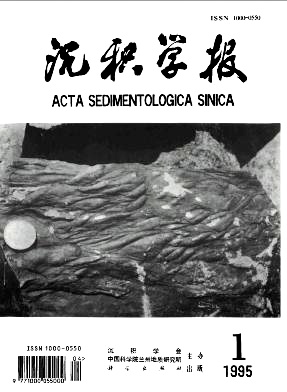Evolution and Sedimentary Environment of Algal Bioherms from Middle to Upper Cambrian in Liujiang Basin, Hebei
- Received Date: 1993-08-20
- Publish Date: 1995-03-10
-
Key words:
- Liujiang Basin /
- Middle-Upper Cambrian /
- Evolution of Algal Bioherms /
- Modelof Sedimentary Environment
Abstract: The main environment from Middle to Upper Cambrian is anopen epicontinental sea in Liujiang Basin, Hebei.ooidal bank and gravel bank are widely distributed on the shallow sea area.Under the influence of environment, algal colony forms vary with the horizon from Zhangxia Formation to Gushan Formation and Changshan Formation in which there are lots of algal bioherms.A perfect sequence is formed by all bioherms in evolution.There are three kinds of biolithites coming from the all bioherms.Each of biolithites is built up by a certain algae.It is easy to recognize these biolithites in outcrop.The principal features are described as follows.Epiphyton bafflestone is mainly distributed in the upper of Zhangxia Formation and the lower of Gushan Formation.They are ofen made up of mounds, of which the scale varies from 2 to 3 m in width and from 1 to 3 m in height.Thrombolite bindstone is mainly distributed in the middle of Gushan Formation.The shapes of the thrombolite mound and Epiphyton mound are very much alike.Stromatolites biolithite is mainly distributed in the upper of Gushan Formation and the lower of Changshan Formation, of which the shapes are thick bedded (Fig.1).Moreover,algal bioherms are closely related with oolite limestone, mud-stripe limestone and calcrirudite.All the mounds and the reefs that are made up of by three kinds of algal limestone mentioned above occur in 8 horizons from the middle to upper Cambrian in this area.From bottom to top they are Epiphiton baffling mounds, thrombolite mounds and stromatolites reefs.Each of the all bioherms is distributed in similar sequences in lithofacies.About 8 sedimentary rhythms are made of all sequences, in which every one begins at rudite that is distributed widely and uncontinuously in horizon, and then the algal mound and reef are built up on the convex part of the rudite bed.There is a clear bounbsry surface between the bioherm and rudite.The top of sequence is oolite limestone.This is a remarkable assemblage in lithofacies that makes rudite, bioherm and oolite which forms an organic whole.There are two clues to recognize the bioherms evolution in this area, one is that the skeleton calcareous algae evolving toward blue-green algae of non-skeleton while the shape of bioherms maintain the Same (R1-R5); and the other is that the massive algae mounds evolve toward stromatolites reefs of thick bedded while algal contents maintain the same (R4--R8) (Fig.2).Each kind of biolithites formed in a cerium environment.The Epiphiton bafflestone is suitable to deeper water on the front of coldal bank.This environment corresponds to the lower part of subtidal.The thrombolite bindstone is suitable to shallower water on the front of coldal bank.This environment corresponds to the upper part of subtidal.The stromatolites biolithite relates mainly to restricted environment on the back of ooidal bank.The evolutionary sequence of algal bioherms noted the geological process that the sedimentary .environment evolved from deeper water on the front of the ooidal bank, setting margin of a carbonate platform,to restricted environment on the back of ooldal bank.
| Citation: | Gong Enpu, Han Shuhe, Guan Guangyue. Evolution and Sedimentary Environment of Algal Bioherms from Middle to Upper Cambrian in Liujiang Basin, Hebei[J]. Acta Sedimentologica Sinica, 1995, 13(1): 75-81. |






 DownLoad:
DownLoad: